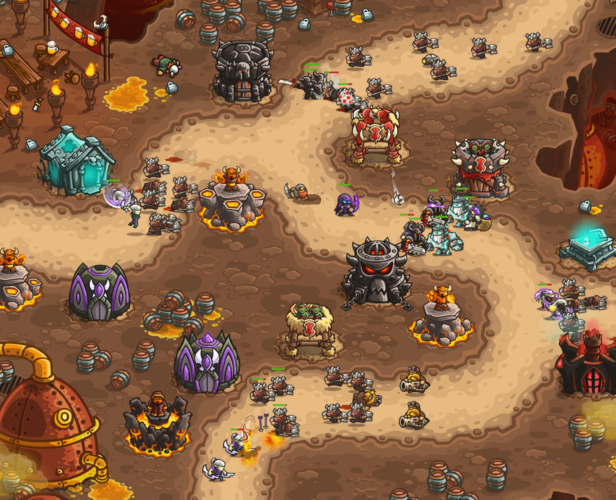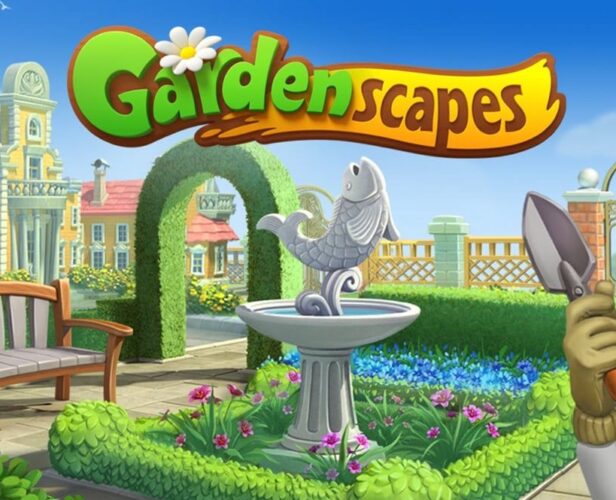Category
Commentary
#Commentary
Top Tips for Choosing Hyper-Casual Publishing Partners in China
There are quite a few things a developer or publisher needs to consider before working with a Chinese publisher. Here are some of the big questions you should be asking: Would their current partners recommend them? You can ask the publisher to show you examples of the games they’ve launched, companies they work with and what results they’re getting. But that can only tell you so much. It can be extremely insightful to check who they’re already working with and contact those people directly. We recommend talking to at least two or three of the publisher’s current partners. Every developer might have had a different experience and hearing only one story might not tell you everything you need to know. Who’s on their team and how is it structured? You should find out what the publishing team looks like. Do...
#Commentary
How to Keep Players Engaged and Coming Back to Your Idle Game
Idle games don’t involve much in the way of thinking from the player. And they don’t have an end goal – you just continue to play them, earning more in-game currency and upgrading as you go. They’re usually free to play, relying on in-app purchases and currency passes to make money. But how can you make sure that your players want to keep coming back? In this blog we’re going to tell you how to do just that, and also share some stats on engagement metrics. Why idle games appeal to both players and developers On paper, idle games sound a bit ridiculous. Why would anyone want to play a game that involves hardly any, well, playing? The numbers say different though – idle games have really high retention rates, and users keep coming back, even when they’ve been playing...
#Commentary
New Report by Adjust and Facebook Reveals Opportunities for Developers
This month, Adjust has teamed up with Facebook to analyze the mobile app market and produce The Mobile App Growth Report. The report digs into the top trends across the industry, focusing on where there has been the most growth, and highlighting trends in emerging markets. And it looks like good news for game developers. Games keep going strong Growing like skeletons out of a mob spawner, games are the top-ranking industry this year. It looks like the surge of activity we’ve seen the last few years is showing no sign of slowing down and that there are more and more people turning to games for entertainment. Hyper-casual games push the industry forward It’s worth noting that Adjust believes that a big part of this growth is due to the hyper-casual genre, which makes sense. We’ve seen that over lockdown...
#Commentary
Publishing Hyper-Casual Games in China: What do you need to know first?
Should you or should you not try to launch your hyper-casual title in China? There are a bunch of rules and regulations to consider before trying to enter the Chinese market. Which are changing all of the time. Keeping up is a challenge, as we’ve seen a lot of changes over the past year – with even more coming over the next year. While bringing mid-core mobile games to China is more complicated, there’s a different process and different things to consider for hyper-casual games. There are plenty of interesting opportunities for hyper-casual developers who might not have even considered publishing in China, or perhaps just don’t know where to start. China’s mobile game market is huge The Chinese mobile market is a 25 billion USD market and it’s predicted to grow even bigger this year. Of course, the global...
#Commentary
The Metrics Behind Successful Tower Defense Games
Get ready to plan your layout, as you’ve got waves upon waves of metrics coming at you. We’ve been taking a gander at Tower Defense games in our latest report, so let’s look at what the perfect set up is when developing yours. If you’d like to jump straight into the stats, download the full report. And, if you’re a keen strategist, you can dive even deeper with Benchmarks+. What’s a Tower Defense game? It’s a strategic genre where the player needs to defend their territory from increasingly large waves of enemies. Usually, the waves of mobs swarm down a path and the player must line it with traps and attacks, usually towers. The key is that the player doesn’t typically control these towers themselves. They automatically fire when an enemy approaches. Why are they popular? Tower Defense combines elements...
#Commentary
How GameAnalytics is Getting Ready for the iOS 14.5 Release
With the upcoming iOS 14.5 release, Apple will enforce its App Tracking Transparency (ATT) framework related to IDFA changes. This means publishers and developers will now need to display a prompt (‘enable ad tracking’) to their mobile users asking for their permission to collect their device identifier, IDFA (Identifier for Advertisers). Until now, this was an ‘opt-out’ model for users – meaning unless the player actively disabled sharing their IDFA in their device settings, then developers could still track this. You need to update your SDK Last year we updated our SDKs, so make sure yours are up to date too. You can do that here. You’ll find more information about this below. But for now, keep reading to learn how we’re preparing for these upcoming changes and any other next steps you need to take. Let’s get to it!...
#Commentary
Left or Right? How Data Warehouses Make it Easy to Make Decisions
Deciding between two different courses of action is perhaps the hardest part of running any business. Recently we wrote about how data warehouses can give you insights, trends and information. Everything you need to make informed decisions. But what sort of decisions do they help with? How do you actually take that insight and make practical choices? In this article, we’re going to talk through nine decisions you might need to make. And how a data warehouse can help. Why do studios and publishers use data warehouses? Most hit studios and publishers have a portfolio of games. A data warehouse brings together the data from across them all and converts it into a format they can search through. With more data, they can spot trends. Knowing the trends, they can fix bugs, optimize their ads, see which ideas perform the...
#Commentary
Hyper-Casual in 2021: What to Expect in Eastern and Western Markets
Hyper-casual games boomed in 2020. With so many of us confined to our homes, the mobile gaming industry saw a peak worldwide – especially in the Chinese, Indian and Brazilian markets. During the lockdowns, active users went up 200%. The average length of gaming sessions went up 20%. And hyper-casual games alone generated 1bn monthly downloads. Can these numbers remain so high? Could they go even higher? Here’s what we’re expecting to see in the market in 2021. IDFA changes will affect hyper-casual the least While IDFA still remains a question mark, the iOS changes seem unlikely to affect hyper-casual games directly. This is because the hyper-casual genre has a broader audience than other categories and targets users differently. Meanwhile, ad money could prove to be an issue due to other genres like mid-core games getting hit with the IDFA...
#Commentary
What is a Data Warehouse and Why do Hit Studios use them?
The other day, I had to venture into the tangled mess of my cable bag. No matter how organized I think I’m being – neatly wrapping cords around their plugs and keeping everything separate – whenever I leave the bag alone for five minutes, it all turns into a Gordian knot by the time I return. It’s infuriating. I really should get a nice box, and make it easy to find what I need. It struck me how similar that feeling is to juggling data from a bunch of different games. Lots of tools and data, all in a mess. But thankfully, you can get a data warehouse to fix the problem. Data warehouses make it much easier to search through and find what you need, reveal insights, and help you combine all those different sources. They’re an essential part...
#Commentary
How to Create a Press Kit for Your Mobile Game (and Why You Really Should)
If you’re a mobile game developer, you want the press to talk about your game. It’s free advertising, and who wouldn’t want that? Creating a press kit is how you make it easy for the press to talk about your game, and to show it in its most positive light. If you previously thought ‘press kit’ was something you asked your dry cleaners to do after a football game, this blog’s for you. Here’s a quick introduction to press kits – how to create them and put them to use. What is a press kit? It’s a collection of text and visuals that gives a journalist or website everything they need to write about your game. You’re basically saying to them: “Oh, you want a game to write about? Well, you won’t need any research to write about my game...
#Commentary
Words Matter – How to Write Compelling Copy to Sell Your Game
You might think that the most important part of being a game developer is, well, developing games. But you also need to be a writer. I’m not just talking about the words that appear in your game (although obviously those are really important) – you’ll also need to create copy for the app store description, patch updates, user interfaces… the list goes on. And the best publishers also have writing that supports their game. So that’s things like website content, press releases, and promotional material, for example, blogs and newsletters. The short version is that your writing is one of the best selling tools you have in your arsenal – eye-catching, well-written copy could be the difference between people downloading your game, or ignoring it and moving onto the next one. Don’t panic Before you run away shouting ‘But I’m...
#Commentary
Best Trivia Games of Lockdown 2020 – Part three
In the last two parts of this series, we’ve explored which casual games sauntered to the top charts and how social games united people across platforms. Now, which other genre could possibly give these a run for their money? If you guessed trivia – the headline was probably a giveaway – you win a brand-new, all-inclusive holiday to the Isle of Analysis. On your left, you’ll see the tiny village of Facts and Figures, while on the right we’ve got three titans, battling for the summit of Mt Saint Quiz. All aboard, it’s time to learn some trivia. How did lockdown affect trivia games? People seem to love filling time with trivia games. While it might be short bursts of eight minutes, they log on often. Just over 5 sessions a day on average, working out to about half an...
#Commentary
The Metrics That Make for a Great Match 3 Game – And How to Reach Them
The match 3 genre has given us some of the most successful, long-running games of all time. With Benchmarks+ we can see what metrics make the best match 3 games successful. We recently updated our Benchmarks+ tool to include 25 sub-genres – one of which is ‘match 3 puzzle’. So now that we can see this classic, much-loved sub-genre in all its multi-metric magnificence, let’s take a look at what a successful match 3 game looks like. To start with: what is a match 3 game? Pretty much any game that challenges you to put matching objects together can be classified as a match 3 game. They started back in the eighties, with games like Tetris, Chain Shot! and Puzznic. In the 2000s, there was Candy Crush and Bejeweled Blitz. And more recently, there are popular titles like Ticket to...












